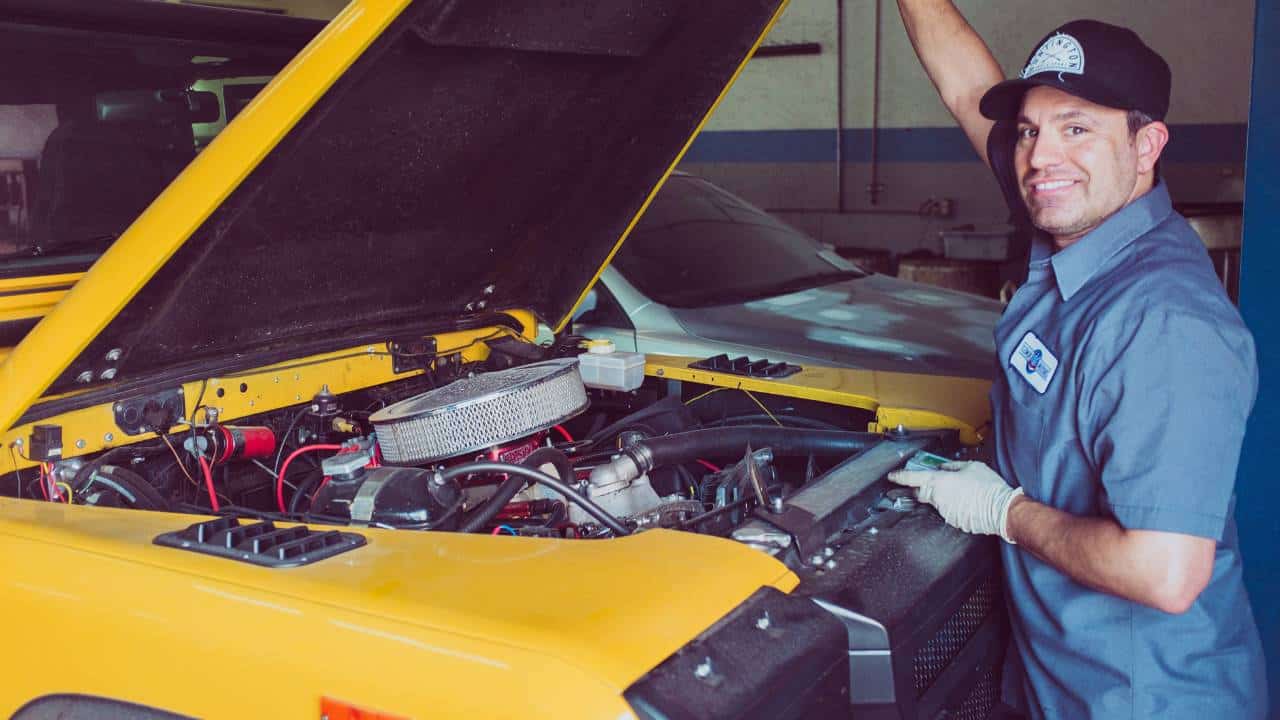Optimising your company fleet can lead to substantial savings and improved operational efficiency. Proper fleet management is key to maximising utilisation and reducing costs. When done effectively, it drives business growth by increasing productivity and freeing up capital for other investments.
Understanding the total cost of ownership (TCO) for your fleet is the first step towards optimisation. This encompasses not just the purchase price of each vehicle, but also ongoing costs such as repairs, servicing, and even driver training. By analysing the TCO, you can identify which areas are draining the most resources and require immediate attention. Implementing smarter procurement strategies, better vehicle maintenance practices, and more efficient route planning are key methods that can lead to notable savings.
Advancements in technology also provide a bounty of tools to assist in fleet optimisation. Telematics systems can offer detailed insights into driver behaviour, fuel usage, and vehicle performance. Leveraging this data allows for informed decisions that can lead to a leaner, greener, and more cost-effective fleet. Remember, small adjustments across a fleet can accumulate to become significant financial advantages for your business.
Preliminary Fleet Analysis
To optimise your company’s fleet for savings, a thorough initial analysis is vital. This will set the stage for informed decisions that can lead to significant cost reductions.
Assessing Fleet Size and Vehicle Type
Your fleet should align with your company’s operational needs. Begin by collecting data on every vehicle, including make, model, condition, and usage patterns. Consider the appropriateness of each vehicle type for their respective tasks. For example, replacing larger, fuel-intensive vehicles with smaller, more efficient ones could be beneficial if the nature of your business allows it.
Evaluating Current Fleet Expenses
Understanding your current fleet expenses is essential for identifying potential savings. Review your cost analysis reports, focusing on fuel consumption, vehicle maintenance, and other recurrent costs. Look closely at how these expenses correlate with each vehicle type and usage. Remember to consider factors like insurance premiums and depreciation, as they contribute significantly to your fleet’s total cost of ownership. By pinpointing where your fleet expenses are highest, you can target those areas for improvement, leading to a more cost-effective fleet operation.
Strategic Fleet Management Planning
In developing a robust strategy for managing your company fleet, it’s important to establish clear objectives and integrate technology effectively.
Setting Fleet Objectives and KPIs
Your initial step is to define specific objectives for your fleet. These goals should align with your broader business aims and might include reducing fuel consumption, minimising idle times, or improving driver safety records. Identifying and tracking Key Performance Indicators (KPIs) is crucial. Common fleet KPIs include metrics such as cost per kilometre, fleet utilisation rates, and maintenance costs. By setting these targets, you’ll have a quantifiable way to measure fleet efficiency and pinpoint areas for improvement.
Selecting Suitable Fleet Management Software
Selecting the right fleet management software is essential for carrying out your strategy. The right technology can help you oversee vehicle maintenance, track driver performance, monitor fuel usage and even automate many of the administrative tasks associated with fleet management. When choosing software, consider ease of use, integration with existing systems, real-time data capabilities, and robust reporting features. A suitable system will not only align with your fleet’s size and complexity but also boost your efficiency by allowing your fleet managers to make informed decisions based on precise data.
Fleet Operation Optimisations
Enhancing the way your fleet operates can lead to significant savings. By focusing on strategic routing and modern tracking technologies, you’ll ensure that your fleet runs more efficiently than ever.
Implementing Route Optimisation Solutions
Optimising your routes is fundamental to fuel efficiency and productivity. With the correct software, you can calculate the most efficient paths for your vehicles. This not only reduces fuel consumption but also decreases wear and tear on your vehicles, and ensures on-time deliveries. By continually analysing traffic patterns and weather conditions, your route optimisation can adapt in real-time, keeping your operations smooth and cost-effective.
Advancements in Telematics and Real-Time Tracking
Telematics technology presents a refined approach to manage your fleet operations. Real-time tracking ensures that you’re always informed about your fleet’s location and performance. With detailed telematics data, you can monitor fuel usage, driver behaviour, and vehicle diagnostics. This allows for the pinpointing of areas for improvement – whether it’s altering routes on the fly to avoid congestion or training drivers to adopt more fuel-efficient driving habits. Telematics bring a level of transparency and accountability to your operations, fostering a constructive environment for continuous optimisation.
Maintenance and Compliance
Effective fleet management hinges on routine upkeep and strict adherence to regulatory standards to minimise downtime and ensure safety.
Maintaining Your Fleet
To keep your vehicles running smoothly, regular check-ups and replacements are essential. Consider tyres as a fundamental element — just as you’d choose a reliable pair for your own car, your company vehicles need quality tyres for optimum performance. Shoes for My Car Ireland offers a selection of premium tyres suited for different vehicle types in your fleet.
Regular Maintenance and Predictive Approaches
Regular maintenance is indispensable for reducing vehicle downtime and maintaining operational efficiency. By employing a predictive maintenance strategy, you can anticipate potential issues before they arise.
- Routine Inspections: Every vehicle should undergo thorough inspections at scheduled intervals.
- Predictive Techniques: Integration of technology, such as telematics, allows for real-time monitoring of vehicle health.
Ensuring Fleet Safety and Legal Compliance
Your fleet’s safety is paramount not only for driver welfare but also for public safety and compliance with the law.
- Risk Assessments: Analyse potential safety risks and take proactive measures to mitigate them.
- Legal Regulations: Stay updated with the latest fleet regulations to ensure full legal compliance. Avoidance of penalties entails adhering meticulously to safety guidelines and maintenance protocols.
Financial Management and Cost Reduction
Effective financial management and cost reduction strategies are crucial to maximising your company fleet’s efficiency and performance. Focusing on fuel management and understanding the total cost of ownership will pave the way for significant savings and more informed financial decisions.
Fuel Management and Reduction Techniques
Fuel costs constitute a major chunk of your fleet expenses, therefore, getting a handle on them can lead to substantial savings. Aim to reduce your fuel consumption by implementing a strict policy that promotes economic driving behaviours among your drivers. Incentivise driving practices that are fuel-efficient, such as maintaining steady speeds and avoiding unnecessary idling. Regularly maintain your vehicles to ensure that they’re running optimally, thus using less fuel. Keep abreast of fuel prices and equip your vehicles with fuel cards or establish accounts with fuel providers that offer favourable rates.
Another method to keep an eye on fuel consumption is to invest in telematics systems. These provide you with detailed insights into individual vehicle performance and driving patterns, enabling you to pinpoint areas for improvement. Utilise these analytics to tailor driver training, optimise routes, and reduce unnecessary mileage.
Understanding Total Cost of Ownership (TCO)
TCO is not just about the initial acquisition cost of your vehicles. It spans the entire lifespan of each vehicle and includes maintenance expenses, insurance, depreciation, and resale value. Learning to calculate TCO correctly will give you a clearer picture of your fleet’s financial landscape. This awareness helps avoid unnecessarily costly repairs and inefficient utilisation of your assets.
To get a professional assessment of your fleet’s TCO, consider hiring an accountant for your business. An accountant can conduct thorough analyses of costs like depreciation, maintenance, fuel usage etc. and provide actionable recommendations on optimising your fleet strategy.
In managing your fleet, keep a close eye on all aspects that contribute to TCO, and make adjustments to your fleet policies accordingly. The more you understand and manage these costs, the more your savings will accrue over time. Your financial prudence in these areas will directly benefit your company’s bottom line.
Fleet Renewal and Disposal
Making informed decisions about when to acquire new vehicles and how to dispose of old ones is crucial for maintaining a cost-effective and efficient fleet. Proper strategies in vehicle acquisition, leasing, and disposal are integral to this process.
Vehicle Acquisition and Leasing Options
When you’re looking to expand or renew your fleet, consider the advantages of both purchasing and leasing. Vehicle acquisition is a significant investment and it’s essential to think about procurement costs and vehicle depreciation. Acquiring new vehicles often means you’ll benefit from lower maintenance costs and better fuel efficiency. On the other hand, leasing offers a way to optimise your fleet without the high upfront costs associated with purchasing. It provides more flexibility and can improve cash flow management as you pay over time. However, it’s important to negotiate your leasing contracts carefully to ensure they align with your company’s mileage requirements and wear-and-tear standards to avoid potential end-of-lease penalties.
Effective Disposal and Vehicle Replacement Strategies
Your approach to vehicle disposal can significantly impact your bottom line. Optimise your strategy by keeping a close watch on market trends to determine the best time to sell your vehicles, aiming to do so before they depreciate excessively. Explore different sales avenues like auctions, trade-ins, or direct sales to find the most profitable method for your situation. Regularly assess your fleet composition and utilise data analytics to determine the right time for vehicle replacement. This ensures you maintain a fleet of modern, fuel-efficient, and reliable vehicles that command a better resale value upon disposal. Always remember to factor in the total cost of ownership when deciding whether to replace or retain a particular vehicle.
Conclusion
By implementing the strategies discussed, you’ll find that optimising your company fleet can lead to significant savings. Ensuring regular maintenance and emphasising fuel-efficient driving habits are key. Investing in newer, more efficient vehicles may have a larger initial cost, but it’s an investment that tends to pay off through reduced repair costs and better fuel economy.
It’s also about being smart with data. Use technology to your advantage by tracking vehicle usage and identifying areas where efficiency can be improved. Remember, small changes can lead to big savings over time.
Lastly, take the time to educate your team. Their understanding of the importance of fleet optimisation is essential. After all, they’re the ones behind the wheel. Your combined efforts will not only cut costs but also contribute to a greener planet by reducing emissions. Persevere in your efforts and enjoy the rewards of a well-optimised fleet.



